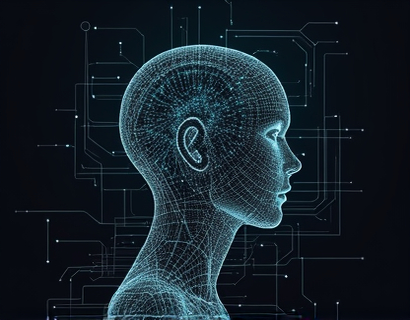Crypto and AI Synergy: Transforming User Engagement in the Tech Ecosystem
The intersection of cryptocurrency and artificial intelligence (AI) is creating a new paradigm in the tech ecosystem, one that promises to revolutionize user engagement and drive unprecedented growth. This synergy is not just a technological curiosity but a powerful force that is reshaping how businesses interact with their users, how value is created and distributed, and how digital experiences are enhanced. For tech leaders and innovators, understanding this synergy is crucial for staying ahead in a rapidly evolving market.
The integration of cryptocurrency and AI is multifaceted, touching various aspects of the tech ecosystem from finance and security to user experience and data management. This article delves into the transformative impact of this combination, providing insights that can help tech professionals harness its potential. By exploring case studies, emerging trends, and the underlying technologies, we aim to offer a comprehensive view of how crypto and AI are merging to create more engaging and dynamic digital environments.
Enhancing Security and Trust
One of the most significant benefits of combining cryptocurrency and AI is the enhancement of security and trust in digital interactions. Traditional systems often rely on centralized authorities to manage and verify transactions, which can be vulnerable to breaches and fraud. By leveraging blockchain technology, a decentralized ledger system, and AI-driven security measures, the tech ecosystem can achieve a higher level of security and trust.
AI algorithms can monitor blockchain networks in real-time, detecting anomalies and potential threats with greater accuracy and speed than human operators. Machine learning models can analyze patterns and predict suspicious activities, enabling proactive measures to prevent security breaches. This synergy ensures that user data and transactions are protected, fostering a more secure environment for engagement.
Moreover, the use of smart contracts, self-executing contracts with the terms directly written into code, can automate and enforce agreements without the need for intermediaries. AI can optimize the creation and execution of smart contracts, ensuring they are robust and resilient against vulnerabilities. This not only streamlines processes but also builds trust among users who can verify the integrity of transactions independently.
Personalized User Experiences
AI's strength lies in its ability to process and analyze vast amounts of data to deliver personalized experiences. When combined with cryptocurrency, this capability can be harnessed to create highly tailored interactions that resonate with individual users. For instance, a digital platform can use AI to analyze user behavior and preferences, then reward users with cryptocurrency tokens for engaging activities such as content creation, sharing, or referrals.
These tokens can serve as a form of digital currency within the platform, allowing users to access premium content, exclusive features, or even trade with others. The use of blockchain ensures that these transactions are transparent and secure, while AI continuously refines the personalization algorithms based on user feedback and behavior. This creates a virtuous cycle where the more users engage, the more valuable and relevant the platform becomes.
Furthermore, AI-driven chatbots and virtual assistants can provide 24/7 support, answering queries and guiding users through the platform's offerings. By integrating cryptocurrency, these assistants can offer incentives for users to complete tasks or achieve certain milestones, further enhancing engagement. For example, a user might earn tokens for completing a tutorial or for referring friends to the platform, creating a gamified experience that keeps users coming back.
Decentralized Marketplaces and Community Building
The combination of cryptocurrency and AI is also transforming the way marketplaces operate, fostering decentralized ecosystems where users have more control and ownership. Decentralized autonomous organizations (DAOs) are a prime example of this synergy, leveraging blockchain and AI to create community-driven platforms.
In a DAO, decision-making power is distributed among token holders, who can propose and vote on changes to the platform. AI can facilitate this process by analyzing community sentiment, predicting outcomes of proposals, and optimizing the governance structure. This ensures that the platform evolves in a direction that aligns with the collective interests of its users.
Decentralized marketplaces built on this foundation can offer unique opportunities for creators and users to interact directly, without the overhead of traditional intermediaries. AI can enhance these marketplaces by matching supply and demand more efficiently, recommending products or services based on user preferences, and ensuring fair pricing through transparent algorithms. The use of cryptocurrency tokens as a medium of exchange further simplifies transactions and reduces friction.
Community building is another area where this synergy shines. By rewarding users with cryptocurrency for contributing to the platform, whether through content creation, moderation, or other valuable activities, DAOs can cultivate a strong and engaged community. AI can analyze user contributions and behavior to identify and incentivize key contributors, fostering a sense of ownership and loyalty among community members.
Data-Driven Insights and Decision Making
Data is the lifeblood of any tech ecosystem, and the combination of cryptocurrency and AI provides unparalleled insights and decision-making capabilities. Blockchain's immutable and transparent nature, combined with AI's advanced analytics, enables the creation of rich, reliable datasets that can be leveraged for various purposes.
For instance, user interaction data can be collected and analyzed to understand engagement patterns, identify trends, and predict future behaviors. This data can inform product development, marketing strategies, and user experience improvements. AI algorithms can process this data in real-time, providing actionable insights that can be acted upon immediately. For example, a platform might use AI to detect a surge in user interest in a particular feature and quickly deploy updates to enhance that feature, keeping users engaged and satisfied.
Moreover, the use of cryptocurrency in data monetization opens new avenues for users. By tokenizing data, users can earn cryptocurrency for sharing their data with platforms, which can then be used to train AI models. This not only provides an additional revenue stream for users but also ensures that data is used ethically and transparently, as users have control over their data and receive compensation for its use.
In the realm of advertising, this synergy can lead to more effective and less intrusive ad experiences. AI can analyze user preferences and behavior to serve relevant ads, while blockchain ensures that ad impressions and clicks are accurately tracked and rewarded. This creates a win-win situation where users are shown ads that interest them, and advertisers get better ROI, all while maintaining user privacy and trust.
Challenges and Considerations
While the potential of combining cryptocurrency and AI is vast, there are several challenges and considerations that must be addressed. One of the primary concerns is regulatory compliance. The crypto space is still largely uncharted territory from a regulatory perspective, and different jurisdictions have varying rules and restrictions. Tech companies must navigate this complex landscape carefully to ensure compliance and avoid legal pitfalls.
Another challenge is the technical complexity involved in integrating blockchain and AI systems. Developing robust, scalable solutions that can handle the demands of large-scale user engagement requires significant expertise and resources. Companies must invest in skilled teams and cutting-edge infrastructure to overcome these technical hurdles.
Additionally, there is the issue of user adoption and education. Many users are still unfamiliar with cryptocurrency and blockchain technology, which can hinder widespread adoption. Educating users about the benefits and functionalities of these technologies is crucial for driving engagement. Clear, user-friendly interfaces and intuitive onboarding processes can help bridge this gap.
Future Outlook
Looking ahead, the synergy between cryptocurrency and AI is poised to drive even more innovative applications and use cases in the tech ecosystem. As the technologies mature and become more mainstream, we can expect to see more sophisticated integrations that further enhance user engagement and value creation.
One exciting area is the development of decentralized finance (DeFi) platforms that combine AI-driven financial services with blockchain's transparency and security. These platforms can offer a wide range of financial products, from lending and borrowing to trading and investment, all accessible to users through a seamless, user-friendly interface.
Another promising direction is the integration of AI with non-fungible tokens (NFTs) and other digital assets, creating new forms of digital ownership and scarcity. AI can enhance the creation, authentication, and trading of NFTs, making these assets more valuable and desirable. This can open up new markets and opportunities for creators and collectors alike.
In conclusion, the convergence of cryptocurrency and AI is transforming the tech ecosystem by enhancing security, personalizing user experiences, enabling decentralized marketplaces, and providing data-driven insights. For tech leaders and innovators, embracing this synergy is not just an option but a necessity for staying competitive and relevant in the digital age. By leveraging these powerful technologies, we can build more secure, engaging, and sustainable digital environments that benefit all stakeholders.










































